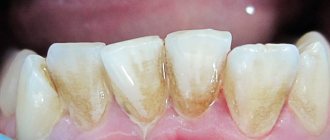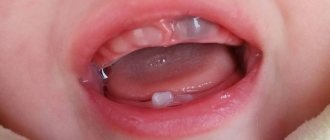Candidiasis (thrush) is a disease in which the skin, as well as the mucous membranes of the mouth and genitals, are affected by the yeast-like fungus Candida. It is classified as a conditionally pathogenic environment. This means that in small quantities such microorganisms inhabit the mucous membranes and skin of healthy people, and their growth is inhibited by the body’s immunity. But when it weakens, intensive proliferation of the fungus occurs, which leads to the development of thrush.
When treating this disease, it is important to choose the right medications based on the type of Candida fungus (there are over eighty of them). Otherwise, there is a high risk of developing a drug-resistant strain, which makes further treatment much more difficult.
The most common forms of the disease are oral (in infants and newborns) and vaginal (in women and men of various ages). This article will focus on vaginal candidiasis.
Causes
Factors that can trigger the development of candidiasis are conventionally divided into three categories:
- Exogenous factors - the environment facilitates the penetration of harmful
- microorganisms:
- increased levels of fungi in the air under production conditions;
- temperature conditions that cause excessive sweating;
- improperly observed hygiene regime.
- Endogenous factors – a decrease in the body’s resistance due to the occurrence of:
- vitamin deficiency;
- metabolic diseases such as obesity, dysproteinemia, ulcerative colitis, diabetes mellitus, dysbacteriosis;
- Itsenko-Cushing's disease;
- infectious chronic processes;
- vegetative dystonia with increased sweating;
- neoplasms;
- thyrotoxicosis;
- diseases of the blood system, etc.
Symptoms
Vaginal candidiasis is most common among women of reproductive age, but can also occur in girls, affecting the vagina and external genitalia, and even in men, the foreskin and head of the penis.
Symptoms of thrush in women:
- discomfort during sexual intercourse;
- swelling and redness of the mucous membranes of the genital organs;
- copious discharge of a cheesy consistency with a sour odor;
- burning and pain when urinating;
- itching that intensifies before or after menstruation, in the evening, with untimely hygiene, with hypothermia.
Symptoms of candidiasis in men:
- pain during sexual intercourse and urination;
- itching, redness, pain, formation of a white cheesy coating in the area of the head of the penis.
If you notice the above signs, you should immediately consult a doctor. “The ProfiMed polyclinic offers women to make an appointment with a gynecologist for a fee in Moscow, and men to use the services of a professional urologist.
Candidiasis of the genitourinary organs (thrush) in men
The cause of the disease is primarily the species C. albicans, less commonly C. tropicalis and C. krusei. C. albicans (albicans - whitish, shiny (lat.) - is the most common species, which has the most pronounced pathogenic properties among all pathogens of candidiasis. Fungi of the genus Candida are widespread in nature, live on household objects, food products, primarily on rich sugars in vegetables and fruits. They quickly and easily colonize human skin and mucous membranes bordering the external environment, including the mucous membranes of the oropharynx, nose, digestive and genitourinary tracts. According to many authors, fungi of the genus Candida are an associate of the normal microflora of the human body, therefore, they are quite often isolated in cultures from the healthy mucous membrane of the urethra, vagina and in urine cultures.
Under certain conditions, saprophytic fungi of the genus Candida can acquire pathogenic properties. In such cases, single or small elements of the fungus located on a healthy mucous membrane begin to multiply intensively, forming multiple filamentous forms (pseudomycelium). An indicator of parasitic activity of excitation is the rapid formation of a filamentous form of the fungus. Fungal cells with new, pathogenic properties attach to the epithelial cells of the mucous membrane, primarily to cells rich in glycogen. Then they are released into them and parasitize in the cytoplasm and nuclei, gradually destroying the host cell and forming lesions of the mucous membrane.
Fungi produce endotoxin and a number of proteolytic, lipolytic and saccharolytic enzymes. The action of these enzymes explains a number of clinical symptoms, in particular, intense itching during vaginal candidiasis, caused by the breakdown of carbohydrates in the epithelial cells of the vaginal mucosa into acetic, formic and pyruvic acids, which irritate the abundant nerve endings located here.
The main causes of the development of candidiasis (thrush) in men Although the causative agents of candidiasis can be sexually transmitted, in most cases, candidiasis is not associated with sexual contact. Candidiasis is not a sexually transmitted disease and is considered together with them due to a similar clinical picture.
Factors contributing to the development of candidiasis: - Congenital and acquired immunodeficiency conditions (HIV infection). — Taking broad-spectrum antibiotics. — Weakening of general immunity (due to sudden climate change, severe emotional stress). — Endocrinopathies (primarily diabetes mellitus). — General infections and intoxications. — Disturbance of homeostasis and normal microbial balance of human mucous membranes (dysbacteriosis) under the influence of endogenous (stress, local infections) and exogenous (corticosteroid hormones, antibiotics, cytostatics). — Weakening of local tissue resistance and disruption of the protective mechanisms of the mucous membrane: local injuries (mechanical, thermal, chemical), maceration, disruption of mucus formation by the glandular epithelium in the presence of chronic or concomitant acute inflammation of the genital organs.
Epidemiology of genitourinary candidiasis in men.
In men, the development of candidiasis is often facilitated by exogenous infection, and the isolated strains of the fungus often have increased pathogenicity.
Candidiasis of the penis, which occurs in a man after sexual contact with a woman suffering from candidal vaginitis, has a second name - “marital thrush”.
Since the skin and mucous membranes of the genital organs of healthy people are highly contaminated with fungi of the genus Candida, endogenous infection cannot be ruled out, as well as the introduction of pathogens from other areas of the skin and mucous membranes, primarily from the rectal area. Therefore, transmission due to anal sex from a man and transfer of infection from the anus are the reason for primary infection of the vagina or re-infection after treatment.
Diagnostics
Diagnosis of vaginal candidiasis is carried out as follows:
- Microscopy of a smear test for thrush: a scraping is taken from the vaginal walls with a special swab onto a glass slide for further examination under a microscope. If there is an infection, Candida fungi will be present in the smear.
- Sowing - growing a culture of fungus from a smear scraping for analysis for thrush. Candidiasis is only diagnosed when fungal colonies grow to 10,000 CFU/ml, since in most women they are always present in the vagina.
- Determination of the type of Candida fungi and their sensitivity to medications.
Treatment
For mild cases of candidiasis in women, local treatment is used using vaginal suppositories or tablets, as well as antifungal creams:
- Clotrimazole (antifungol, canizon, candibene);
- Nystatin;
- Miconazole (Klion-D);
- Natamycin, etc.
Creams and suppositories cure thrush in a week, modern drugs - in one or two days. To fully guarantee recovery, the course of treatment is repeated twice. In some cases, a single dose of fluconazole (Mikomax, Diflucan, Forkan, Flucostat, etc.) is prescribed at a dosage of 150 mg orally.
When the infection recurs, treatment of candidiasis is aimed at relieving the symptoms of the disease and subsequent prevention. In addition to local treatment, oral medications are prescribed, which are selected individually for the specific type of Candida fungus. These are vaginal tablets and suppositories with clotrimazole, as well as taking flucanozole 100 mg orally - once a week for several months. It is also necessary to be examined regularly by a doctor.
To maintain immunity, it is recommended to increase the intake of bifidobacteria and limit irritating foods. During treatment you should abstain from sexual intercourse.
In most cases, the use of topical antifungal agents is enough to treat thrush for men. Your doctor will prescribe creams or ointments containing clotrimazole twice a day for a week. Additionally, general medications can be used if treatment is ineffective. Sexual contacts should be excluded during treatment.
It should be noted that with timely treatment, candidiasis cannot cause serious harm to health. But a long course of the disease can lead to damage to the kidneys, urethra and bladder, as well as to infertility. In particularly advanced forms, candidiasis has a damaging effect on the reproductive organs, which leads to male infertility.
Modern ideas about the treatment of urogenital candidiasis
Urogenital candidiasis is a fungal disease of the mucous membranes and skin of the genitourinary organs, caused by yeast-like fungi of the genus Candida.
Currently, more than 170 biological species of yeast-like fungi have been described, of which the causative agents of urogenital candidiasis are: C. albicans - in 80% (abroad - in 45-70%), C. glabrata - in 15-30%, C. tropicalis, C. krusei, C. parapsilosis - in 4–7% of cases.
The disease affects both men and women, but is more common in women of reproductive age. In terms of prevalence, vulvovaginal candidiasis ranks second among all vulvovaginal infections. The peak incidence is observed at 20–45 years of age.
Sexual transmission of infection occurs in 30–40% of cases. More often (60–70%) the disease is caused by endogenous infection. During pregnancy, the incidence increases by 10–20%; the risk of transmission of infection to the newborn during childbirth is approximately 70–85%.
Risk factors usually include pregnancy, the use of hormonal contraception and hormone replacement therapy (especially first-generation hormonal drugs), long-term and unsystematic use of antibiotics, immunosuppressants, cytostatics and some other drugs. However, it should be noted that antibacterial agents act as a risk factor only against the background of existing candidiasis and their effect is short-lived. Disorders of carbohydrate metabolism caused by diabetes mellitus contribute to the persistent course of urogenital candidiasis with frequent relapses that are difficult to treat.
Immunodeficiency conditions, systemic diseases leading to immune deficiency, also provoke the occurrence and recurrence of urogenital candidiasis. Candida infection is especially severe in HIV-infected patients. Often, in the terminal stage of AIDS, a generalized candida infection develops.
The main pathogenetic factors traditionally include an imbalance of the vaginal microflora, an increase in the concentration of estrogen and progestins in the tissues, and a violation of the local immunity of the genital tract.
Vulvovaginal candidiasis is the most commonly used name for the disease, since its main clinical manifestations are vulvitis and vaginitis. However, according to localization, candidal cervicitis, colpitis, urethritis, and bartholinitis are also distinguished. According to the nature of the course of the disease, they are distinguished:
- acute (fresh, sporadic) candidiasis (lasts no more than 2 months);
- chronic, including: a) recurrent (at least 4 episodes per year); b) persistent (symptoms of the disease persist constantly, somewhat decreasing after treatment).
Acute genital candidiasis is characterized by a pronounced inflammatory picture. The main complaints and symptoms of vulvovaginal candidiasis are itching and burning, constant or worsening in the afternoon, evening, night, after a long walk, and in patients with atopic predisposition - under the influence of many different factors. In the area of the vulva and labia, the itching is usually intense and is accompanied by scratching. Severe, constant itching often leads to insomnia and neuroses. The feeling of itching and burning, pain, especially in the scratching area, interferes with urination and can lead to urinary retention. Soreness and a burning sensation in the vagina intensify during coitus and lead to fear of sexual intercourse and sexual dysfunction (dyspareunia).
The next symptom is leukorrhea. The leucorrhoea is not abundant, white, thick (creamy) or flaky, curdled, filmy, and has a faint, sour odor. They are rarely watery, with cheesy-crumby inclusions. May be completely absent.
When nearby skin is affected, hyperemia, maceration of the skin, individual pustular elements, and itching in the anus are noted.
In patients with a predisposition, candidiasis often recurs, that is, the disease returns after complete extinction of clinical manifestations and restoration of impaired mucosal functions during treatment. If such relapses occur at least 4 times a year, the disease is classified as chronic recurrent vulvovaginal candidiasis. Treatment tactics in this case differ from those for sporadic episodes.
Another form of chronic infection is persistent vulvovaginal candidiasis, in which clinical symptoms persist constantly and only subside somewhat after treatment. Relapses should be distinguished from exacerbations, which develop not after the disease, but against the background of persistent clinical symptoms. Of course, the approach to treatment in this case is somewhat different than in other forms.
If previously the chronicization and recurrence of the disease was explained by reinfection (either endo- or exogenous), now the cause of these phenomena is considered to be the state of the macroorganism, since the same strain of the fungus is constantly released.
In foreign literature, the terms “complicated” and “secondary” vulvovaginal candidiasis are often used. Complicated includes both chronic forms and atypical etiology, pronounced clinical manifestations, course against the background of severe predisposing conditions (diabetes mellitus, cancer, blood diseases, immunodeficiency, including HIV infection), i.e. cases that are difficult to treat .
Secondary vulvovaginal candidiasis usually includes cases of infection occurring against the background of existing non-infectious lesions of the genital organs with lichen planus, Behcet's disease, pemphigoid.
As a rule, symptoms of candidiasis develop quickly, a week before menstruation, and subside somewhat during menstruation. In the chronic persistent form, their intensity increases.
In terms of differential diagnosis, the other two most common vaginal infections, bacterial vaginosis and trichomoniasis, have similar symptoms.
Symptoms of bacterial vaginosis usually appear in the first week of the menstrual cycle and go away on their own in the middle of the cycle. Recurrence of bacterial vaginosis sometimes follows recurrence of vaginal candidiasis.
Acute trichomoniasis is characterized by itching and a more pronounced burning sensation. The discharge is usually more abundant, liquid, and foamy.
Microscopy of a native preparation or a stained smear is the simplest and most accessible method for identifying the fungus, its mycelium and spores. Cultural diagnosis is recommended only in certain cases:
- to confirm the diagnosis with a negative microscopy result and the presence of a typical clinic;
- for species identification in cases of suspected atypical etiology;
- to determine sensitivity to antimycotics (usually together with species identification).
Isolation of more than 1•104 CFU/ml in the absence of clinical symptoms is regarded as asymptomatic colonization (candidate carriage), and treatment is not prescribed (10–25% of the population are transient carriers of Candida in the oral cavity, 65–80% in the intestines, 17% in the detritus of gastroduodenal ulcers). However, in the presence of predisposing (provoking) factors (for example, antibiotic, chemotherapy, radiation, steroid and other immunosuppressive therapy), prophylactic (preventive) treatment is often carried out. Nystatin is a widely used prophylactic drug. However, it is effective for the prevention of candidiasis only in the intestinal lumen. Its systemic absorption is no more than 3–5%, so it is not able to affect fungi that are not in the intestinal lumen. To prevent urogenital candidiasis, preference is given to local forms of antimycotics (vaginal tablets and suppositories, solutions and ointments). In the prevention of candidiasis in people suffering from serious diseases that are considered as predisposing factors (diabetes mellitus), only systemic azole drugs and amphotericin can be really effective.
Anti-candidal drugs include:
- polyenes - nystatin, levorin, amphotericin;
- imidazoles - ketoconazole, clotrimazole, miconazole, bifonazole, isoconazole;
- triazoles - fluconazole, itraconazole;
- others - flucytosine, nitrofungin, decamine, iodine preparations, etc.
Most cases of vulvovaginal candidiasis can be treated with local antifungals and antiseptics.
The advantage of local agents is safety, since systemic absorption is practically small, at the same time very high concentrations of the antimycotic are created directly in the affected area, i.e. on the surface of the mucosa.
Vaginal creams are recommended for the treatment of vulvitis, tablets and suppositories - for vaginitis.
When treating pregnant women, local antimycotics, if indicated, can be prescribed only in the second and third trimesters. Systemic antimycotics are not recommended during pregnancy.
Quite often, with vulvovaginal candidiasis, concomitant infections or disturbances in the vaginal microbiocenosis are observed. In such cases, combination drugs are used, which are highly clinically effective and can be successfully used in the treatment of vulvovaginitis of mixed etiology. Among these drugs, the most popular are:
- travocort - isoconazole nitrate + difluorocortolone-21-valerate;
- Klion-D - miconazole + metronidazole;
- Macmiror complex 500 - nystatin + nifuratel;
- polygynax - nystatin + neomycin + polymyxin;
- terzhinan - nystatin + neomycin sulfate + ternidazole + prednisolone.
However, combined forms are not recommended for use abroad, since, according to some researchers, they worsen pharmacokinetics due to competition between the components of the combined drug. In such cases, preference is given to a combination of local treatment with systemic treatment.
Local antiseptics are also used in the treatment of vulvovaginal candidiasis:
- solutions of soda, boric acid, sodium tetraborate, potassium permanganate (for douching and tampons), aniline dyes (for lubrication in mirrors);
- suppositories - povidone-iodine (betadine, vocadine, iodoxide) - at night;
- vaginal capsules - boric acid 600 mg/day;
- corticosteroid creams (classes I and II).
For severe vulvitis, warm baths with soda and local corticosteroid creams of classes I and II are prescribed. Excellent results during therapy can be achieved by using Travocort cream, which contains the antimycotic isoconazole in combination with the class II corticosteroid diflucortolone-21-valerate, for severe vulvitis. This optimal combination allows you to quickly relieve symptoms in women and especially men. This cream is easy to use, as it is prescribed only once a day (at night) for women and 2 times (morning and evening) for men. Travocort is odorless and does not stain laundry.
Highly active corticosteroid ointments of classes III and IV are not recommended, as they can lead to exacerbation and worsening of symptoms. Pathogenetic therapy also includes the use of antihistamines and ketotifen.
In persistent cases and with disseminated candidiasis, preference is given to systemic therapy, and in some cases to a combination of systemic and local treatment.
Fluconazole drugs are the “gold standard” in the treatment of patients with candidiasis. Itraconazole and ketoconazole are also used to treat this pathology.
During pregnancy and lactation, the use of systemic drugs is not recommended, and the references to positive results in some works have not been proven by a sufficient number of observations and scientific studies.
The duration of systemic therapy for uncomplicated vulvovaginal candidiasis is minimal (single dose, or oral medications for no more than 5 days).
The general recommendation for the treatment of complicated forms is to lengthen the course of therapy (the volume of local and systemic therapy is doubled).
Based on our own experience, we have proposed treatment regimens for uncomplicated and complicated vulvovaginal candidiasis (Table).
Our observations indicate that the most adequate methods for preventing relapses are using both local and systemic drugs.
Treatment of chronic recurrent vulvovaginal candidiasis
- Initial course: mycoflucan (fluconazole) 50 mg daily for 14 days or 150 mg once every 3 days for 2 weeks (a total of 14 tablets of 50 mg or 5 tablets of 150 mg per course).
- Preventive course: mycoflucan (fluconazole) 150 mg once a week for 3–4 months.
Treatment of persistent vulvovaginal candidiasis
The initial course is the same as for chronic recurrent candidiasis. Maintenance therapy consists of constant use of anti-candidiasis drugs: fluconazole (mycoflucan), 150 mg tablets, 1–2 times a month for 12–24 months.
In the treatment of antimycotic-resistant candidiasis, if therapy is ineffective, it is necessary to re-confirm the diagnosis by culture and isolation of the pathogen, followed by determining its type and sensitivity to antifungal drugs. The choice of systemic or local antimycotic and its dose is then carried out in accordance with the results of the study.
After re-confirming the diagnosis, it is possible to switch to local therapy with antifungals or antiseptics, prescribed in high doses, often and in long courses.
It is also advisable to use vitamin complexes containing biotin.
N. V. Kungurov , Doctor of Medical Sciences, Professor N. M. Gerasimova , Doctor of Biological Sciences, Professor I. F. Vishnevskaya Ural Research Institute of Dermatovenereology and Immunopathology of the Ministry of Health of Russia, Yekaterinburg









